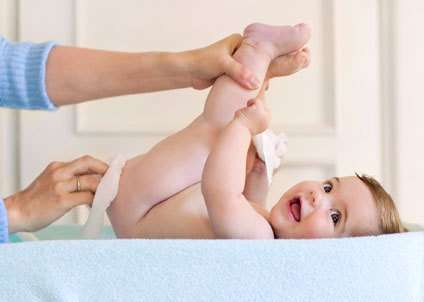Baby Basics: Diapering

While different aspects of daily baby care can be a source of joy, most first-time parents tend to view diaper changing with some degree of displeasure and unease. Yet diaper changing isn’t as complicated an affair as some tend to think; all it takes is a bit of practice and you'll find that keeping your baby clean and happy is a simple task.
One thing that you should never avoid is promptly changing your baby's diaper as soon as it needs it, as procrastination could cause skin irritation and diaper rash for your little one.
What You Need
Before you begin, make sure you have the following supplies on hand and in easy reach:
- A clean diaper
- Warm water and cotton balls for babies with sensitive skin or a clean washcloth or baby wipes
- Diaper rash ointment or petroleum jelly for treating and preventing rashes
- A changing pad or towel for placing under your baby
- A change of clothes if the diaper has leaked
Getting Down to Business
Before you undress your baby, make sure that all your supplies are within easy reach. It is never OK to leave your baby unattended at any point, as you never know when your newborn will decide to roll over.
- Before you begin changing your baby's diapers, wash and dry your hands well to make sure you aren't sporting any germs that could cause skin irritation or infections for your baby.
- Keep your baby distracted and entertained by giving it a small toy or making cooing noises and singing to it long enough for you to change the diaper. You can have family members or friends do this for you while you change.
- Spread a waterproof or precautionary changing cloth under your baby before you begin to avoid unwanted messes getting on the surface you're using at the time.
- Unfasten the diaper and check its contents to decide your next step before removing it from underneath the baby. If it's a bowel movement, use the clean part of the soiled diaper to wipe away most of the mess before throwing it in the bin, which should also be in close reach so that you don't have to leave your baby's side or take your attention off it. Clean the baby's front thoroughly with warm water or a baby wipe, then lift the legs and wipe its bottom. Pat dry well before applying any ointment or putting on the new diaper.
- If you're using diapers with sticky tabs, be careful not to let the tape stick to the baby's skin. Diapers should not be too tight around the waist and legs either; you can tell a diaper is too snug if it leaves marks on your baby's skin. If the umbilical stump is still attached, fold the diaper downward at the waist to avoid having it rub against the raw area, thus leaving it exposed to the air and preventing it from getting wet.
- Dispose of the soiled diapers by folding them over tightly and throwing them in the garbage, which should be regularly emptied out to avoid the development of odors in your bathroom or changing area.
- Change your baby's clothing if dirty, and wash your hands properly with soap and water.
Source: www.finebabyworld.com





